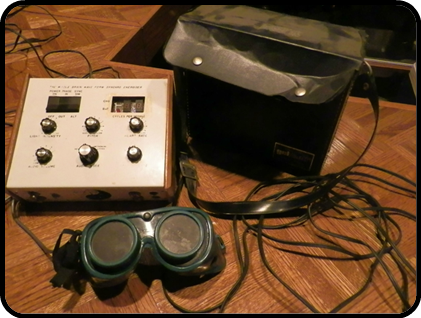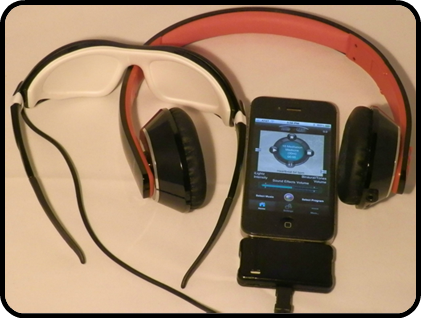







Sources
History
Physiology
Research
Overview
Treatment
Both Huxley and Walter were among the first to articulate the correlates of photic stimulation. They described experiences of incessantly changing patterns, whose color was a function of the rate of flashing. Between ten and fifteen flashes per second, Walter reported orange and red; above fifteen, green and blue; above eighteen, white and grey. Huxley also described enriched and intensified experiences when subjects were under the effects of mescaline or lysergic acid. In his view, the rhythms of the lamp interacted with the rhythms of the brain's electrical activity to produce a complex interference pattern, which is translated by the brain's perceptual circuits into a conscious pattern of color and movement. Glicksohn also reported on altered states of consciousness from photic driving and its relationship of self-perceived creativity.
Other studies have shown that stimulation can produce both transient and lasting changes in the EEG. Collura articulated the relationship between the low-frequency and high-frequency components of the steady-state visual evoked potential as reflecting anatomically and physiologically distinct response mechanisms.
Additional clinical studies explored the use of photic entrainment to induce hypnotic trance, to augment anasthesia during surgery, and to reduce pain, control gagging and accelerate healing in dentistry. More recently, the induction of dissociation was explored, which aided the understanding of dissociative pathology and development of better techniques for relaxing people suffering from trauma and posttraumatic stress disorder.
Dissociation begins after approximately four to eight minutes from properly applied AVS. A restabilization effect occurs where muscles relax, electro-dermal activity decreases, peripheral blood flow stabilizes, breathing becomes diaphragmatic and relaxed, and heart rates becomes uniform and smooth. Visual entrainment alone, in the alpha frequency range (7–10 Hz), has been shown to easily induce hypnosis, and it has been shown that nearly 80% of subjects entered into either a light or deep hypnotic trance within six minutes during alpha AVS. AVS provides an excellent medium for achieving an altered state of consciousness.
Research

